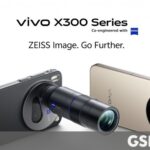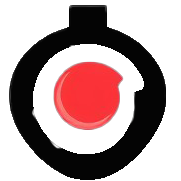Brands are essential to decision-making. For those who believe that brands are just about image or messaging, please consider this: in a world of increasing choice, brands are One-Think shopping.
Today, there is a drive to meet the needs of individuals in individual ways. Personalization is pervasive. Personalization has led to proliferation of choice that either stupefies or satisfies. For example, stand in front of the granola bar section of your local supermarket. There is a dazzling array of different options based on energy, size, nuts, chocolate, raisins, dates, flavors, chewy, not chewy, calories, sugar, fats, salt, multi-packs and vitamins of all sorts. Where do you look first? You begin with the brand you know and trust.
This article is part of Branding Strategy Insider’s newsletter. You can sign up here to get thought pieces like this sent to your inbox.
In the seminal book, The Paradox of Choice, Barry Schwartz posited that, “The fact that some choice is good, doesn’t necessarily mean that more choice is better… clinging tenaciously to all the choice available to us contributes to bad decisions, to anxiety, stress, and dissatisfaction.”
We like choices. We like choosing the best option for our specific needs. We desire choice. We want more choices but at the same time, we want decision-making to be simple. We like having a product and/or service that meets our specific needs. But, when faced with a vast array of choices, we become hesitant and unsure as to which is the right choice. Too much choice increases uncertainty, decreases speed of decision-making and requires mental effort.
Choice explosion leads to choice overload. Decision-making can feel like a hopeless quest. When we become stymied, we opt for the first choice or opt for a choice that appears to address most of our needs. In either case, we do not make the best choice. And, we know we did not make the best choice. When there is too much effort associated with making a choice, we make lazy choices rather than smart choices.
With lazy choices, we default to an acceptable choices. We settle. Good enough is good enough. We feel okay about the acceptable choice. We chose the path of least resistance.
No matter what purchase system marketers believe in – whether funnel or journey – the fact is that the end goal is a purchase decision for a specific brand. But, is the customer satisfied with that decision? And, will the customer buy that item again? If the going-in bias is that this offering is not the best choice, is satisfaction enough for a repeat purchase?
Satisfaction is the fulfillment of one’s wishes, one’s expectations, one’s needs or the pleasure derived from this fulfillment. Satisfaction is a post-choice usage assessment relative to a specific decision. Marketers see satisfaction with a branded product or service as the holy grail. This is because satisfaction plays an important role in loyalty. And, loyal customers are valuable customers.
For some time, marketers have known that too much choice leads to satisficing, not satisfying. Satisficing comes from the Nobel-prize winning work of Herbert Simon in 1956. Professor Simon focused on decision-making. Satisficing is a blend of satisfaction and sufficient. It is the decision-making process that we go through when we settle rather than select the optimal solution. In situations where there are too many choices, finding the best choice can be a difficult quest. Our inherent desire to make a simple, effortless choice in the face of too many options forces us to default to whatever choice feels satisfactory whether it is the best choice or not.
In other words, we satisfice by selecting the first option that meets our given need or that appears to meet most of our needs but neither choice is our optimal decision.
Satisficing is related to another decision-making theory called cognitive miser. Cognitive miser refers to the fact that we tend to solve problems in simple and easy ways. Regardless of intelligence, we prefer to avoid spending a lot of effort on decisions that require energy and time. We look for shortcuts rather than use more careful, thoughtful thinking. We use only as much information as necessary. And, the less expertise we have, the more shortcuts we use.
The more complex the choice, the more we adopt strategies that help us deal with the problem. We may disregard information reducing our information overload. We may overuse some information in order to alleviate the burden of having to acknowledge more information. We default to the cheapest option, the most expensive option, the option we trust.
This brings us back to brand.
Brands play a critical role in an over-choiced world. If you know and/or love a brand, seeing that brand makes choice simple. Select the brand you prefer. Explore the options within that brand. Brand becomes what social scientists call a heuristic: a piece of information that makes decision-making easier. Brands are One-Think shopping.
One-Think shopping helps us avoid information overload. One-Think shopping makes shoppers’ decisions effortless, leading to easier, faster, trusted decision-making. One-Think shopping reduces the anxiety of buyer’s remorse. A strong, familiar, trustworthy brand facilitates One-Think shopping because we do not have to think twice about the brand choice. One-Think shopping is one-think decision-making. One-Think shopping helps us avoid satisficing. One-Think shopping is our informed short-cut to making an optimal decision in a less than optimal situation.
Choosing a brand simplifies choice. In a complex, over-whelming, over-variety, uncertain environment, brands are One-Think shopping decisions. And, as brand proliferation increases due to personalization and new disruptive products, brands that we know make life easier. Why add more uncertainty to our lives by selecting an unknown or new brand?
However, in a world of increased choice, brands are actively eroding One-Think shopping. Maybe it is the FOMO. Maybe brands want to market to the audience of one.
Look at Oral-B, a trusted toothbrush brand. Oral-B offers manual and electric toothbrushes. If you want a manual toothbrush, there are 32 different options of manual toothbrushes. If you want an electric toothbrush, do you want battery operated or plug-in? There are four Oral-B electric toothbrush categories: Smart Series (8 options), iO Series (40 options), Pro Series (25 options) and Genius Series (10 options). Oral-B reminds you that you have a choice among CrossAction bristles, Precision Clean Bristles and Pro Gum Care Bristles. You can also buy a Power White rubber polishing cup that removes surface stains and whitens teeth.
This array of options is an example of how too much choice works against the benefit of brand as One-Think shopping. Buying a toothbrush should not be such a difficult, time-consuming experience, especially when Oral-B is a favorite, trusted brand. Granted, we are not buying a car. Data show that there is a correlation between lower-priced items and less cognitive effort. But, some of the Oral-B toothbrushes cost over $200. Many offerings are over $100.
Return to the granola bar aisle. Nature Valley offers 9 types of granola bars: Crunchy Bars (10 varieties), Fruit & Nut Bars (6 varieties), Lunch Box Bars (2 varieties), Protein Bars (7 varieties), Savory Nut Crunch Bars (3 varieties), Soft Baked Breakfast Bars (3 varieties), Soft-Baked Muffin (4 varieties), Sweet & Salty Bars (19 varieties) and Wafer Bars (4 varieties). Nature Valley also offers granola, snacks and gluten free products as well as other items.
Brands need to recognize that part of the power of brand is the ability of the customer to short-cut decision-making while perceiving that the specific brand is the best choice.
With One-Think shopping, we should be able to quickly make decisions based on the relevant, differentiated, trustworthiness of the expected brand experience. Brand is supposed to be a streamlined roadway through the confusion of choosing. This trustworthiness is part of the brand’s value. Brand loyal customers trust the expected total branded experience will be delivered. Brand loyal purchase decisions are easier to make.
One-Think shopping means self-confident decision-making. One-Think shopping means that customers will feel satisfied and smart about their choices. One-Think shopping means that all things being equal, all brand ties should end in customers buying their favorite brand: your brand.
Contributed to Branding Strategy Insider by: Joan Kiddon, Author of The Paradox Planet: Creating Brand Experiences For The Age Of I
At The Blake Project, we help clients worldwide, in all stages of development, define or redefine and articulate what makes them competitive at critical moments of change, including defining a vision that propels their businesses and brands forward. Please email us to learn how we can help you compete differently.
Branding Strategy Insider is a service of The Blake Project: A strategic brand consultancy specializing in Brand Research, Brand Strategy, Brand Growth and Brand Education
FREE Publications And Resources For Marketers
Post Views: 2










